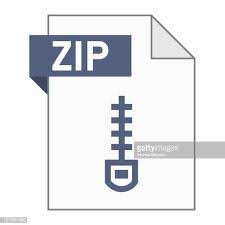Description
1 ISLR Classification Lab
Complete the lab from Section 4.6 of ISLR. Feel free to utilize the provided worked jupyter notebook as
inspiration.
You do not need to submit your code for this question, it is purely for you to practice with.
2 Classification Models for Stock Market Data
Solve exercise 10 from Section 4.7 of ISLR.
The Weekly dataset can be found in the Data folder. A description of it can be found here on page
14.
3 Reduced-Rank LDA
Let B and W be positive definite matrices and consider the following problem of maximizing the Rayleigh
quotient:
max
a
a
T Ba
a
T W a
(1)
1. Use the method of Lagrange multipliers to solve this problem. In particular, show that the optimal
solution a
∗
is an eigenvector of a certain matrix related to B and W. What is this matrix, and
which eigenvector does a
∗
correspond to?
Hint: Use the scale invariance of the Rayleigh quotient to rewrite the unconstrained maximization
as a constrained maximization problem where B appears in the objective, and W appears in the
constraint.
1
IEOR E4525
Christian Kroer
Assignment 2
Due: Oct 15th, at 11:59pm
2. By identifying B and W with the between-class and within-class covariance matrices, we can interpret the problem in (1) as the problem of finding the linear combination a
∗T x so as to maximize the
between-class variance relative to the within-class variance. Show that a
∗T x is the first discriminant
variable.
Hint: First note that W = Σ from the lecture slides, and that B∗ = D−1/2U
T BUD−1/2
4 Logistic Regression
1. Show that binary classification using logistic regression yields a linear classifier.
Consider a naive Bayes classifier for a binary classification problem where all the class-conditional
distributions are assumed to be Gaussian with the variance of each feature Xj being equal across the two
classes. That is we assume (Xj |Y = k) ∼ N(µjk, σ2
j
)
2. Show that the decision boundary is a linear function of X = (X1, …, Xd) and hence that it has the
same parametric form as the decision boundary given by logistic regression.
3. Does the result of part (2) imply that in this case, Gaussian naive Bayes and logistic regression will
find the same decision boundary? Justify your answer.
4. If indeed the class conditional distributions are Gaussian with (Xj |Y = k) ∼ N(µjk, σ2
j
) and the
assumptions of naive Bayes are true, which classifier do you think will be “better”: the naive Bayes
classifier of part (2) or logistic regression? Justify your answer.
5 Bootstrap Probabilities
Solve exercise 2 from Section 5.4 of ISLR.
2



